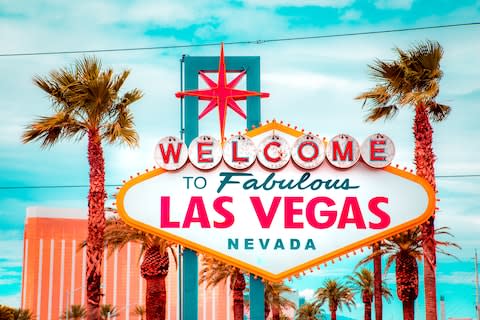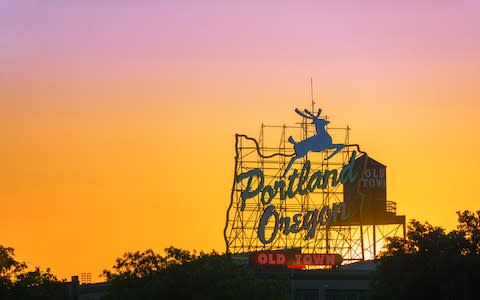How America's first high-speed railway – and Virgin Trains – is transforming Florida

Sir Richard Branson may have been absent, but he and his Virgin Trains company were the toast of Florida this week as America’s first high-speed rail project took its most important step, initiating construction of the 170-mile Orlando to West Palm Beach route.
The $4billion project endured several false starts before the opening last year of a 70-mile stretch, operated by Brightline, between West Palm Beach and Miami. It uses existing track and had to battle funding and legal challenges just to launch on a limited basis. The speeds are also rather stately, at just 79mph. Now, thanks to Virgin investment and trademark licensing, Brightline has rebranded as Virgin Trains USA, and the key Orlando leg of the rail system will take shape in the next three years, signalling “the reinvention of passenger rail in the US,” according to company president Patrick Goddard. And, thanks to the laying of 170 miles of new track, trains will run far more quickly – up to 125mph.
Virgin’s involvement, officially agreed last November, has paved the way for critical private funding for the ambitious line, and the biggest construction section is now under way, opening the door to potential high-speed routes across America, including Las Vegas to Los Angeles (see below).
British visitors to Florida are one of the chief targets for the Orlando-Miami route once it is completed by 2022, and Goddard was quick to pay tribute to the “Branson effect” in converting Brightline into an international enterprise. He said: “There’s tremendous synergy between us and the Virgin Group. Virgin has 99 per cent brand awareness in the United States, so, when you say Virgin Trains, people already have a picture of what that might be.
“A lot of Americans have experience of flying with Virgin America [which merged into Alaska Airlines in 2018], so that is a big advantage. And, in Florida, between Virgin Holidays, Virgin Trains, Virgin Hotels and Virgin Voyages, which start sailing next spring, those entities generate millions of tourist arrivals, so there is enormous synergy to capitalise on.”
The rail link will take an estimated three million cars a year off Florida’s crowded motorways, as well as providing a quicker, more comfortable route between the two major destinations, with Orlando Airport the focal point thanks to a $220m transport hub complete with railway station that was just awaiting the full Miami high-speed line. Journey times between the two cities will be cut from between five and seven hours to just three.
Monday’s (Jun 24) ground-breaking ceremony came 150 years after the original “Golden Spike” moment that marked the completion of America’s coast-to-coast railroad, and Virgin Trains USA chairman Wes Edens hailed the modern equivalent as “the start of the Red Spike Era,” using commemorative Virgin-red spikes to underline a new dawn in passenger rail. He insisted: “There are a dozen other city pairs like Orlando and Miami ready for this kind of development, with routes that are too short to fly but too long to drive. We are ready to fulfill that potential.”
Orlando Airport chairman Domingo Sanchez added: “This puts together a great experience for the international traveller. You’ll be able to land here at a world-class airport, take the train to Miami and come back for a comprehensive vacation. Virgin’s standard of service is certainly something we value. They elevate us, and people will be very comfortable with the brand.”

How America is finally embracing high-speed rail
By Chris Leadbeater
In America, the railway has largely become a relic of the past, chugging unhurriedly where it chugs at all. Although there are elements of the Amtrak system which work well and regularly (the service from New York to Washington DC, stopping in Philadelphia, is especially effective), the emergence in Florida of Brightline (now Virgin Trains USA) counts as an innovation. This is the first privately owned inter-city passenger service in the country since 1983 - when the Rio Grande Zephyr, which tied Denver in Colorado to Ogden in Utah, hit the metaphorical buffers.
As mentioned earlier, also on the cards is an ultra-quick line between Las Vegas and Los Angeles – a trip which thousands of travellers make every weekend, but one which slots into a twilight zone of being too short a distance to fly and a long way by road (the best part of 270 miles). This link will require an even greater level of planning, work and investment. Costs have been estimated at a considerable $6.9billion as, currently, no track exists between the cities.

Further challenges lie in its path. To say that the line will run to and from LA is somewhat misleading. In its current form, the plan will see a new 185-mile line built roughly parallel to the I-15 highway, between Sin City and Victorville – a town which sits a full 85 miles from downtown LA. The track will go no further, as this would require construction through the San Bernadino and San Gabriel mountain ranges. Instead, assuming the connection to Victorville proves a success, the line could be extended 50 miles west, to Palmdale. The train would cover the distance in around 85 minutes, at speeds of up to 150mph.
A link to Palmdale would be significant. Here, it would lock arms with the California High-Speed Rail network, an enormous, state-funded project, now tentatively taking shape in the Golden State. Work has been underway since 2015 on a system which will revolutionise travel on the west flank of the USA, connecting San Diego in the south with Sacramento 500 miles to the north, while spreading its arms into Los Angeles and San Francisco. Again, this is a vision of the future. The first, central segment of the network, between San Jose and Bakersfield, is not due to be completed until 2027; the lines into San Francisco and Anaheim (south of Los Angeles) until 2033. But here, finally, America will have real high-speed rail – there is a promise of trains running at speeds of 220mph.
There are also plans to construct a high-speed rail line that would connect portions of the Pacific Northwest – linking Portland in Oregon with Vancouver, over the border in Canada, in two hours. The proposals, announced last year, rachet up the speed factor again, to 250mph, with services between Portland and Seattle in one hour, and Seattle and Vancouver in a further 60 minutes.

This would be a remarkable boon to a cross-border region, sometimes referred to as “Cascadia”, which, even now, has a deep level of economic integration. You can, of course, already travel by train between Portland and Vancouver, using the Amtrak Cascades service. But the train takes nine hours; fine for tourists who want to enjoy the scenery of the Pacific Northwest at what is definitely a leisurely pace, but of no use to people with places to be and appointments to keep – all of whom know where to find an airport.
The Cascadia line is still firmly at the drawing-board stage, but it is clear that America, once one of the planet’s great railway-builder, is finally rekindling its love affair with a mode of transport it once eulogised.

